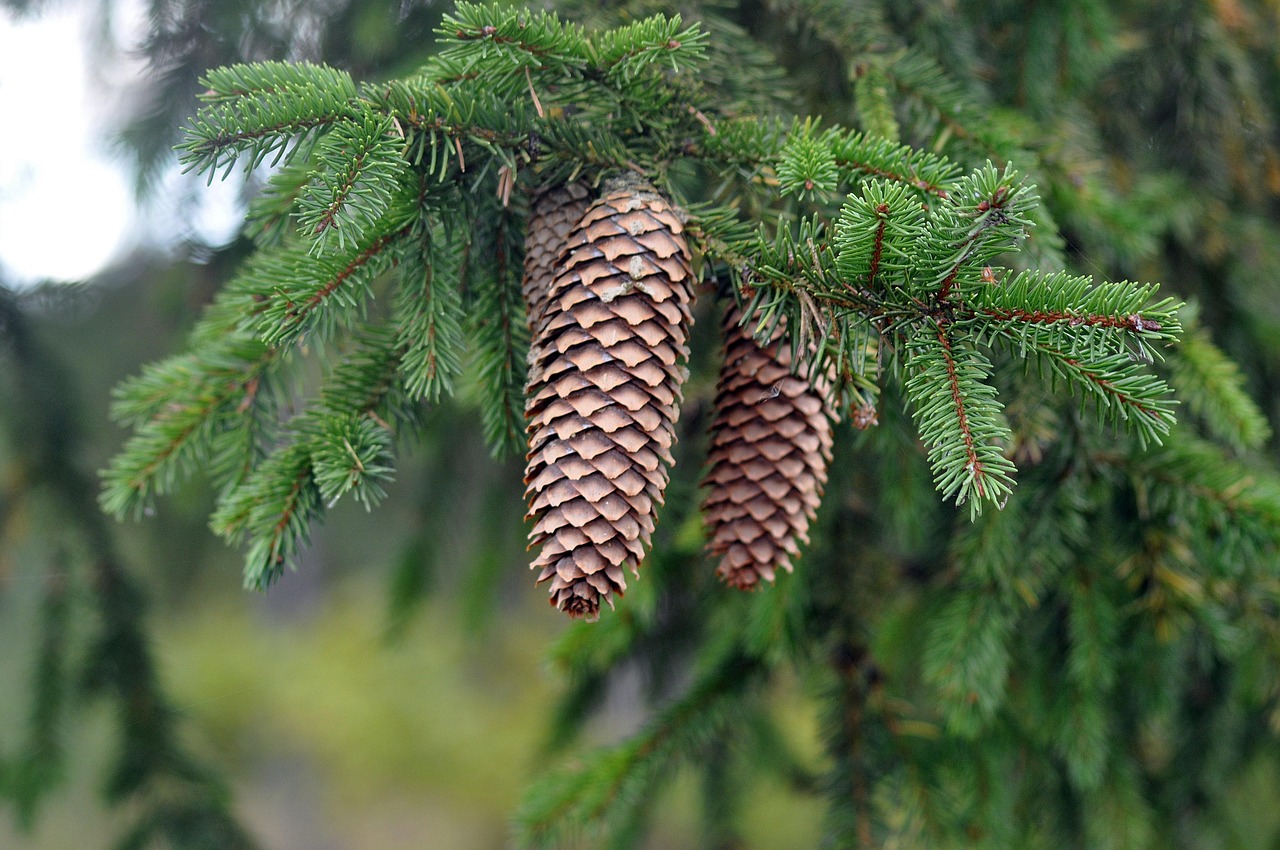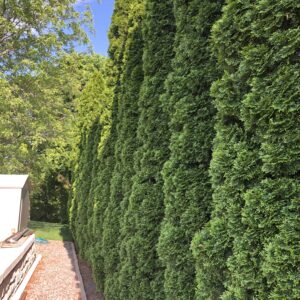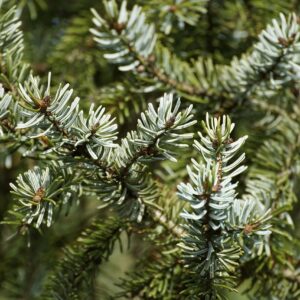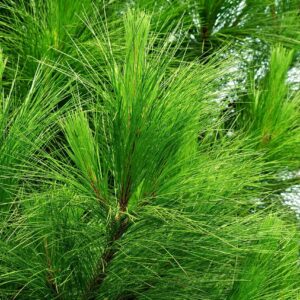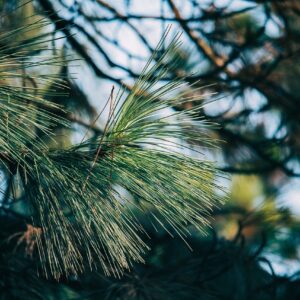The Norway Spruce (Picea abies) is a large, fast-growing evergreen tree native to Europe, but it has become widely planted in North America for its impressive size, dense foliage, and utility as a windbreak, privacy screen, or ornamental tree. It’s particularly valued for its height and symmetrical shape, making it a popular choice in landscapes and forestry.
Here are the key features of the Norway Spruce:
Size and Growth: Height: Norway Spruces can grow quite tall, typically reaching 40 to 60 feet, but they can grow up to 100 feet in ideal conditions. Spread: The tree has a broad, pyramidal shape, with a spread of about 25 to 30 feet at maturity. Growth Rate: It is a fast-growing tree, particularly when young, often adding 2 to 3 feet per year under optimal conditions.
Needles: The needles of the Norway Spruce are dark green, soft, and 1 to 1.5 inches long. They are attached individually to the branches and have a distinct, pointed tip. The needles are four-sided and are somewhat flexible, which gives the tree a softer appearance compared to some other spruces.
Cones: Norway Spruce produces long, cylindrical cones that can grow up to 6 inches in length. These cones are initially green but turn brown as they mature in the fall. The cones are attractive in their own right and add to the winter interest of the tree when they hang from the branches.
Bark: The bark of the Norway Spruce is gray to reddish-brown and becomes more scaly and rough as the tree matures. In young trees, the bark is smoother, but over time it develops horizontal cracks and ridges.
Habitat and Growing Conditions: Soil: Norway Spruces prefer well-drained, acidic to neutral soil. They are adaptable to different soil types but do best in moist, fertile ground. Light: They thrive in full sun but can tolerate partial shade, though they may not grow as vigorously in low-light conditions. Water: These trees prefer consistent moisture but are somewhat drought-tolerant once established. They do not perform well in dry, sandy soils without regular water. Hardiness: Norway Spruces are hardy in USDA zones 3 through 7, making them suitable for much of the northern and temperate U.S. and Canada.
Wildlife Value: Nesting and Shelter: The dense foliage provides shelter for birds and small mammals, making it an excellent tree for wildlife. Food Source: The seeds in the cones are eaten by some bird species, such as squirrels, woodpeckers, and crossbills. Windbreaks and Privacy: Due to its fast growth and dense branching, Norway Spruce is often used as a windbreak or privacy screen, offering protection to other plants and structures from strong winds. Aesthetic and Landscaping Value: Norway Spruce is a beautiful, stately tree, perfect for large landscapes, parks, or as a specimen tree in residential settings. Its symmetrical, conical shape and lush, green needles make it a standout in the winter landscape, especially when covered in snow. It’s often used for privacy hedges, windbreaks, or as a backdrop in larger garden designs.
Maintenance: Pruning: Norway Spruce generally doesn’t require much pruning except to remove any dead or damaged branches. Pruning should be done in late winter or early spring to avoid interfering with its growth. Fertilization: These trees can benefit from occasional feeding with a balanced fertilizer, especially if growing in nutrient-poor soil. Pests/Diseases: Norway Spruce can be susceptible to pests like spruce budworm, aphids, and scale insects. It can also be affected by fungal diseases like needle cast or rust. Regular monitoring can help prevent or manage these issues.
Wood: The wood of the Norway Spruce is light, soft, and relatively low-density, making it useful for applications like paper production, plywood, and construction lumber. The wood is also used in the production of musical instruments, particularly in the crafting of soundboards for pianos and violins.
Potential Issues: Needle Drop: Like other evergreens, the Norway Spruce sheds its older needles, particularly in the fall, which can result in a layer of needles around the tree. This is a natural process and is not usually a sign of disease. Weak Wood: Though Norway Spruce is used in construction, its wood is relatively soft and can be susceptible to breaking in strong winds or snowstorms. Root System: The roots of the Norway Spruce can spread widely, so be cautious about planting it near structures, sidewalks, or other trees that might be affected by the roots.
Uses: Ornamental Tree: Due to its attractive form, the Norway Spruce is often used in ornamental landscaping, especially for large gardens or parks. Privacy Screen or Windbreak: Its fast growth and dense branches make it an excellent choice for creating privacy or shelter from winds. Christmas Tree: In some areas, the Norway Spruce is used as a Christmas tree, thanks to its symmetrical shape and strong branch structure, though its needles are not as fragrant as some other traditional Christmas tree species.
Pros and Cons: Pros: Fast-growing, attractive form, dense foliage, excellent for wildlife, good for privacy screens and windbreaks. Cons: Can drop needles, susceptible to some pests and diseases, weaker wood, may require space due to its large size.
The Norway Spruce is an excellent choice for larger properties or landscapes where its size, beauty, and functionality as a windbreak or privacy screen can be fully appreciated. It’s also a popular tree in forestry, ornamental gardening, and reforestation projects due to its rapid growth and utility.

